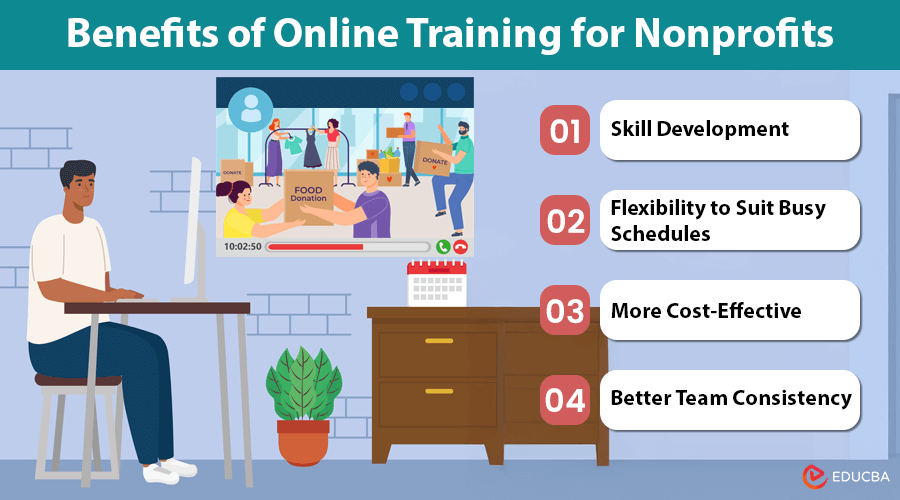Introduction to Online Training for Nonprofits
Non-profit workers are everyday heroes who dedicate their lives to fighting for causes many would not even know how to tackle, such as helping children find safe homes, amplifying silenced voices, and creating lasting change. However, research shows that these heroes stretch themselves to their limits. According to the 2024 Nonprofit Leaders Survey, 80% of nonprofit workers feel overwhelmed, exhausted, and undersupported. This is unacceptable because their work directly impacts vulnerable communities, and when these workers lack the necessary tools, they hinder their ability to create change. Online training for nonprofits offers solutions to these challenges, empowering teams to work smarter, adapt faster, and make a bigger impact.
Why Online Training is Essential for Nonprofits?
Nearly 73.2% of non-profits face financial limitations (National Council of Nonprofits). Online training offers a cost-effective way to enhance team skills without straining budgets. For example, teams can use online training to learn non-profit accounting software, ensuring they track every dollar and maximize resources toward their mission.
Benefits of Online Training for Nonprofits
Dr. Seuss once said, “The more that you read, the more things you will know. The more that you learn, the more places you will go.” For nonprofits, this could not be truer. Online training offers several key benefits that can transform your team and mission:
1. Skill Development
The nonprofit sector has been dealing with a skills gap for years, and it has only grown worse with more job vacancies than ever. According to the Council of Nonprofits, nearly 75% of nonprofits struggled with open positions in 2023.
What can you do when your team is understaffed and finding the right talent is difficult? Invest in the team you already have. Online training helps close the skills gap by offering courses that build leadership abilities, teach specialized skills like grant writing or project management, and provide knowledge of important software.
2. Flexibility to Suit Busy Schedules
Nonprofit teams often work nights, weekends, and holidays—whatever it takes to make a difference. That schedule does not fit the typical “clock-in, clock-out” model.
Online training is flexible and does not require your team to be in a classroom at a specific time. Whether in a remote area, traveling for work, or juggling multiple tasks, they can learn at their own pace and on their schedule.
3. More Cost-Effective
Nonprofits often face tight budgets, and while online training is typically more affordable than traditional options (with some providers offering free courses), its benefits go beyond just cost savings.
Donors, the public, and even the government constantly scrutinize nonprofits, asking, “How are you spending this money?” Although nonprofits are still highly trusted, only about half of Americans have confidence in them. This makes every dollar count, and finding ways to save is crucial.
Online training is not only cost-effective but also a statement of financial responsibility. It shows that you are committed to maximizing your resources and avoiding expensive in-person events or consultants who may not deliver results.
4. Better Team Consistency
Your team is passionate and dedicated, but how do you ensure everyone is on the same page? Team members may be spread across different locations or working different hours, making it hard to attend long in-person sessions.
Online training is flexible and scalable, ensuring that all team members receive the same high-quality education, no matter their role or location. It creates a consistent foundation of knowledge that reinforces your mission and equips everyone to contribute in the best way possible.
How to Implement Online Training Successfully?
1. Set Clear Goals
Define what you want your team to achieve through training. Clear goals help measure progress and ensure your efforts are purposeful.
2. Align Training with Your Mission
Choose courses that directly support your mission. For instance, if your focus is empowering marginalized communities, select training that enhances advocacy or outreach skills.
3. Opt for Certification
Certification provides tangible proof of skill development. It validates your investment and assures stakeholders that your team can drive change.
4. Create a Realistic Schedule
Integrate training into your team’s routines to avoid overwhelming them. Short, consistent sessions—30 minutes a day or one session a week—are more effective than cramming.
5. Track Progress and Impact
Use tools to monitor participation, completion rates, and quiz scores. Go beyond metrics to assess how new skills improve workflows or solve real-world problems.
6. Celebrate Achievements
Recognize and appreciate your team’s hard work. A simple thank-you or public acknowledgment can boost morale and encourage continuous learning.
7. Foster a Culture of Continuous Learning
Make learning a core value. Encourage curiosity and regular skill development to keep up with evolving trends and technologies.
Final Thoughts
Online training for nonprofits is not just a solution but an opportunity. It helps teams gain new skills, bridge gaps, and ensure organizations are better prepared to achieve their missions. Your team is tired of juggling endless tasks without the tools to succeed. When implemented thoughtfully, online training can reignite their passion and give them the energy to keep making a difference. Invest in your team. Invest in online training. The change you seek starts with them.
Recommended Articles
We hope this guide on online training for nonprofits has been helpful. For more insights on team development and nonprofit success, check out these recommended articles.

